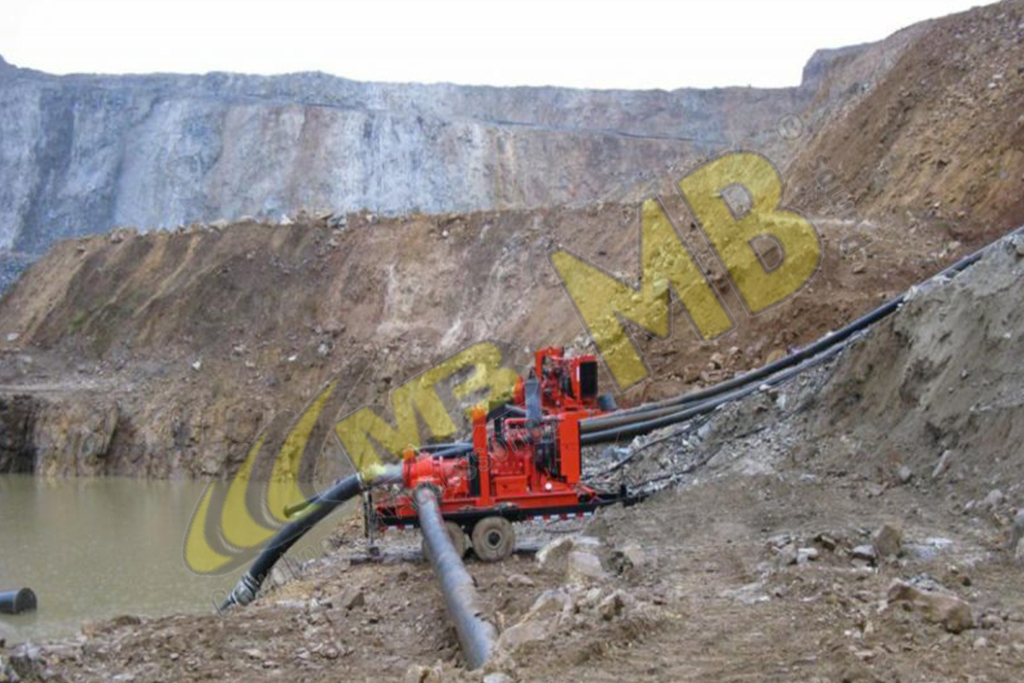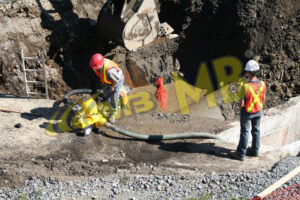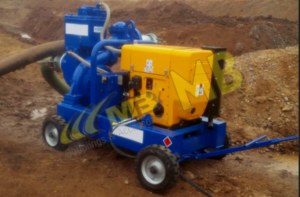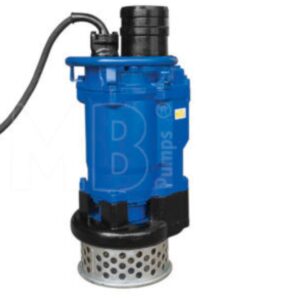Dewatering is an important procedure in many sectors, including building, mining, and agriculture. Choosing the correct dewatering pump is critical whether you need to control groundwater levels on a building site or manage excess water in a mine. In this blog, we will guide you through the essential elements to consider when selecting a dewatering pump in Australia for your unique application. In addition, we will introduce you to MB Exports, your trusted dewatering pump manufacturer in Australia.
Dewatering Pumps for Specific Applications
Different dewatering methods are not always interchangeable, and every method has a rather limited range of uses. Dewatering systems in mines and on construction sites may be costly to install, so choosing the proper approach for each application is essential.
Construction Industry
Stable working conditions are needed for creating foundations for buildings, dams, and nearly any other project that includes subsurface construction below the water table. Dewatering of an excavated area is required to maintain the bottom dry and avoid leaking of groundwater, rains, and dirt into the excavation.
On construction site, there are four primary dewatering methods:
Wellpoint – This technique makes use of a network of wells, or “wellpoints,” often built in the shape of a rectangle surrounding the building site. Dewatering riser pipes are put in the wells and linked to a common header pipe through a flexible swing pipe. A vacuum pump is installed in the header pipe to suck water through the wellpoint notches and discharge it away from the working area. This approach is effective up to a depth of roughly 5 or 6 metres. If further drawdown is required, more stages of wellpoints must be used.
Eductor Wells – The eductor wells method works similarly to the wellpoint method. The only difference is in the dewatering mechanism. Instead of a vacuum, this system pulls water from the wellpoints by passing high-pressure water via a venturi tube in the riser units. The major advantage of the eductor approach is that depending on the number of pumps employed, the water table may be reduced by ten to forty-five metres. This technique is especially cost-effective in low-permeability soils.
Open Sump Pumping – This is the most cost-effective and widely used method of dewatering. Slurry pumps for solids handling are used to drain water and sludge from sumps formed around the excavation site. Pumps used for this purpose must be able to handle water with high solid content and, in many situations, bigger solid material. Because the sumps must be at a lower level than the excavation, new sumps must be produced as the excavation continues.
Deep Wellpoint – The deep wellpoint approach involves drilling greater diameter wells around the excavation area. Under gravity, water seeps into these wellpoints and is sucked out by submersible pumps. To keep their form, wells are enclosed. Screens and filters are frequently employed to prevent undesirable silt from entering the well, making the operation of the submersible pump easier and preventing it from becoming blocked.
Mining Industry
Sumps are used throughout the mining sector to collect groundwater that leaks into shafts and working areas. Water is pumped to the surface using submersible pumps. Most of the time, little attempt is made to stop the flow of this water, which necessitates regular pumping to keep the mine’s working areas dry. Several pump stations may be required in deep mining operations to bring water to the surface in stages.
Opencast mining operations are also subject to groundwater seepage and rainfall gathering. Many of these operations create sumps to induce water runoff from work zones. This water typically includes significant solids as well as solid materials, and removal necessitates the use of a pump capable of handling this task. To dewater their working areas, opencast mining companies often employ mobile sump pumps.
Factors Affecting Dewatering Pump Selection
Whatever the application, there are several variables to consider when selecting a dewatering pump:
Water that gathers during mine production, construction, or floods is not pure and includes solids. The solid content varies substantially between applications. Floodwaters, in general, have a far lower solid concentration than water collected during mining or building operations. Pumps suffer from abrasive damage from solids. Dewatering pumps must be durable enough to endure abrasion in the extreme circumstances seen in the construction and mining sectors. Because of their poor tolerances, centrifugal pumps are particularly prone to abrasive wear and will need extensive maintenance. Pumps with higher abrasive wear resistance should be used for these applications.
Conclusion:
Choosing the right dewatering pump is important to the success of your dewatering operations. With MB Exports as your trusted partner for dewatering pumps in Australia, you can be certain that you’re getting the right pump for the job. Consider your individual requirements, assess the site circumstances, and depend on the knowledge of MB Exports to make an educated decision. With MB Exports on your side, you can make dewatering in Australia more efficient and effective. Choose MB Exports for high-quality dewatering pumps Australia and experience the difference.
Read more about What Are Submersible Pumps and How Do They Work?




